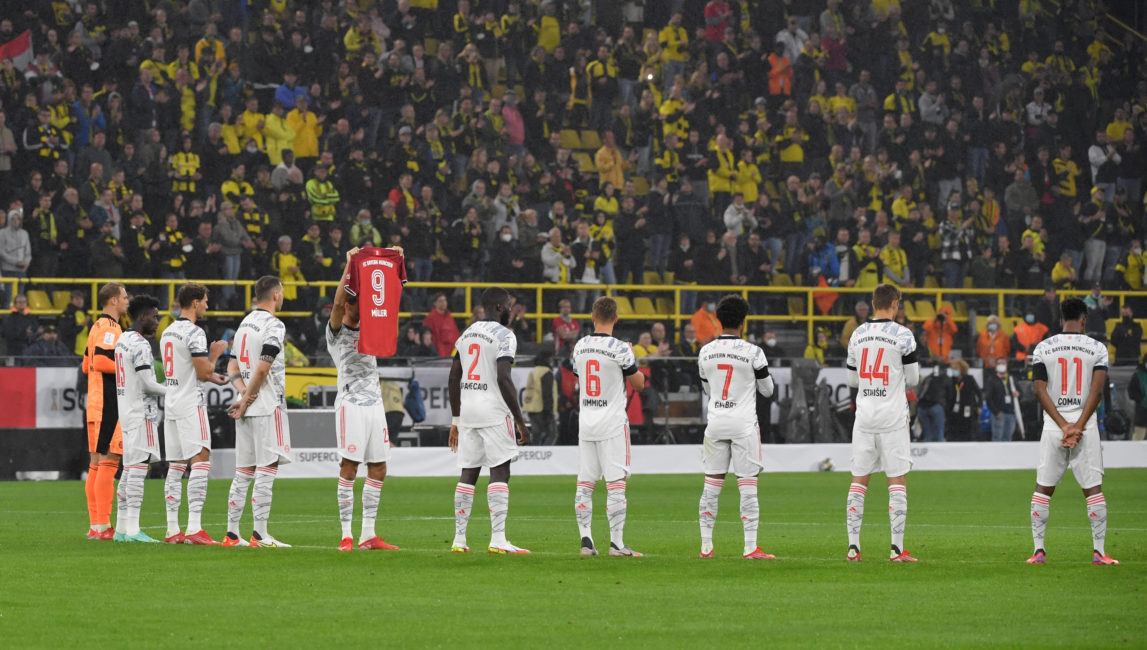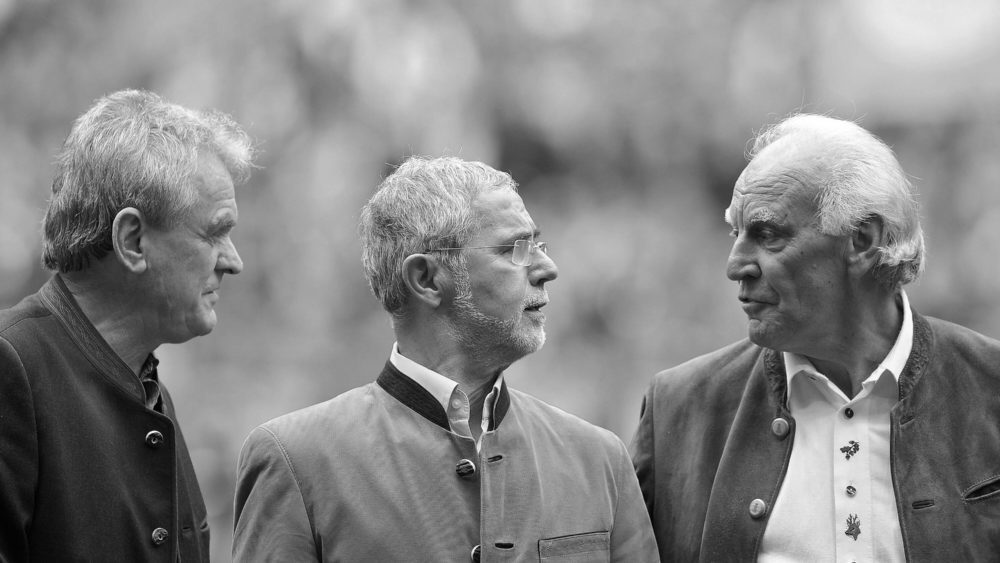Gerd Müller obituary – a Bayern myth
The mythical image of Müller lived in me through my father’s stories about an attacker who could seemingly score goals out of any situation, no matter how hopeless it seemed. Then, of course, there were the books and articles about the German “bomber”. Again and again it was written about the striker of the century, who could score at will inside the eighteen yard box. Fast, agile, a strong finisher – the list seemed endless. Again and again, Müller could be seen jumping up in joy, with his long, black, flowing hair waiving in the air, his hands raised high, wearing a red and white baggy shirt with red trousers that were far too short.
And of course there is the one picture everyone knows: Müller, this time in a white shirt with black shorts in the middle of two players clothed in orange. Just a second ago, he had once again read the play quicker and turned faster than his two markers. Then he finishes powerfully with his right foot, his massive thigh muscles flexed. Uli Hoeneß is standing in the background and already seems to be cheering before the ball even hits the back of the net. The 28-year-old Gerd from Nördlingen shoots Germany into seventh football heaven on this 7 July.
Of course, the myth of Gerd Müller also includes the breathtaking numbers. 14 World Cup goals, 40 Bundesliga goals in one season, 68 international game goals and 365 goals in Germany’s first division. At a time when Bayern’s top scorer sometimes scored just half as many goals in a season, these numbers seemed positively out of this world. Record top scorer, record hat-trick scorer, record calendar year scorer – Müller was at the top in almost every category for most of his life.
Of course, I had later read about Müller’s history after the World Cup title. About his end in the national team, the discarding in Munich, his departure to faraway Florida, which never became his home. There is another picture of Gerd Müller in a red and white shirt. But this one is cross-striped and bears the logo of the Fort Lauterdale Strikers. Gerd from Munich shakes hands with cosmopolitan Franz – they are the two shining lights of FC Bayern and they could not be more different.
One becomes a central figure at his former club, the other crashes and yet becomes a model of the “mia san mia” that adorns the Bayern shirt. It is for Uli Hoeneß to recognize the fate of his former teammate and give him a job, a task, a way out.
That was the Gerd Müller I knew. He was the quiet and publicity-shy assistant coach of the Bayern youth teams, always wearing a long training coat. Cautiously, he could be seen with his wards in his arms or helping them during special shifts after regular training. This is how he passed on his legacy to later generations of FC Bayern players with namesake (and advertising partner) Thomas Müller as the figurehead.

(Source: Imago Images)
Records are there to be broken. In the 2000s, Gerd Müller watched his records being slowly surpassed. First there was Ronaldo “El Fenomeno”, who scored his 15th World Cup goal against Ghana at the 2006 World Cup in Germany, of all places. In 2012, Messi broke his record for the most goals in a calendar year. In 2014, Miroslav Klose replaces him as the most successful national team scorer. And in 2021 Lewandowski breaks the seemingly eternal 40-goal in a Bundesliga season record. But it is this very moment of an apparent loss that emphasises one final time time what Gerd Müller has meant to FC Bayern to this day.
On scoring his 40th goal, the Polish super striker of today lifts his shirt to reveal a second shirt he wears underneath with the inscription “4EVER GERD”. FC Bayern and the myth of Gerd Müller are forever inseparable. As Uli Hoeneß said years ago: “Without Gerd, FC Bayern would never have become the FC Bayern we know today.”









